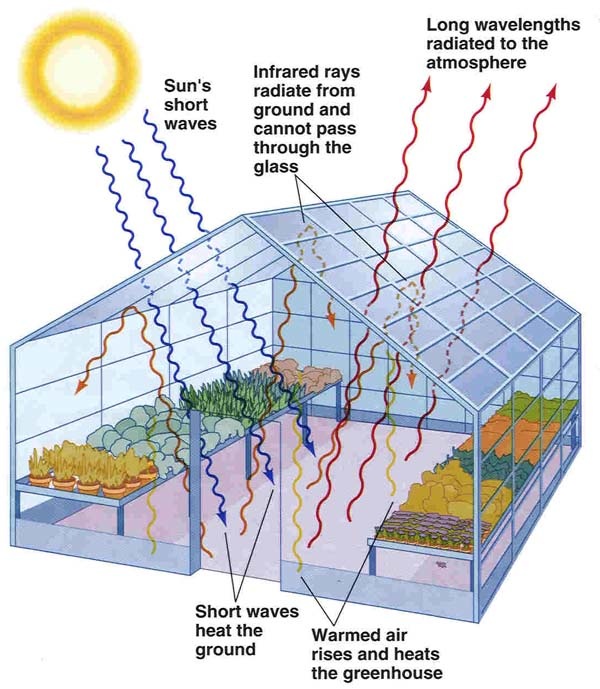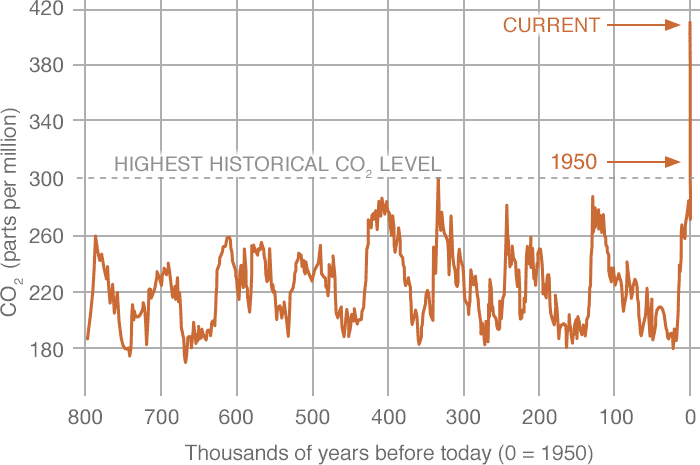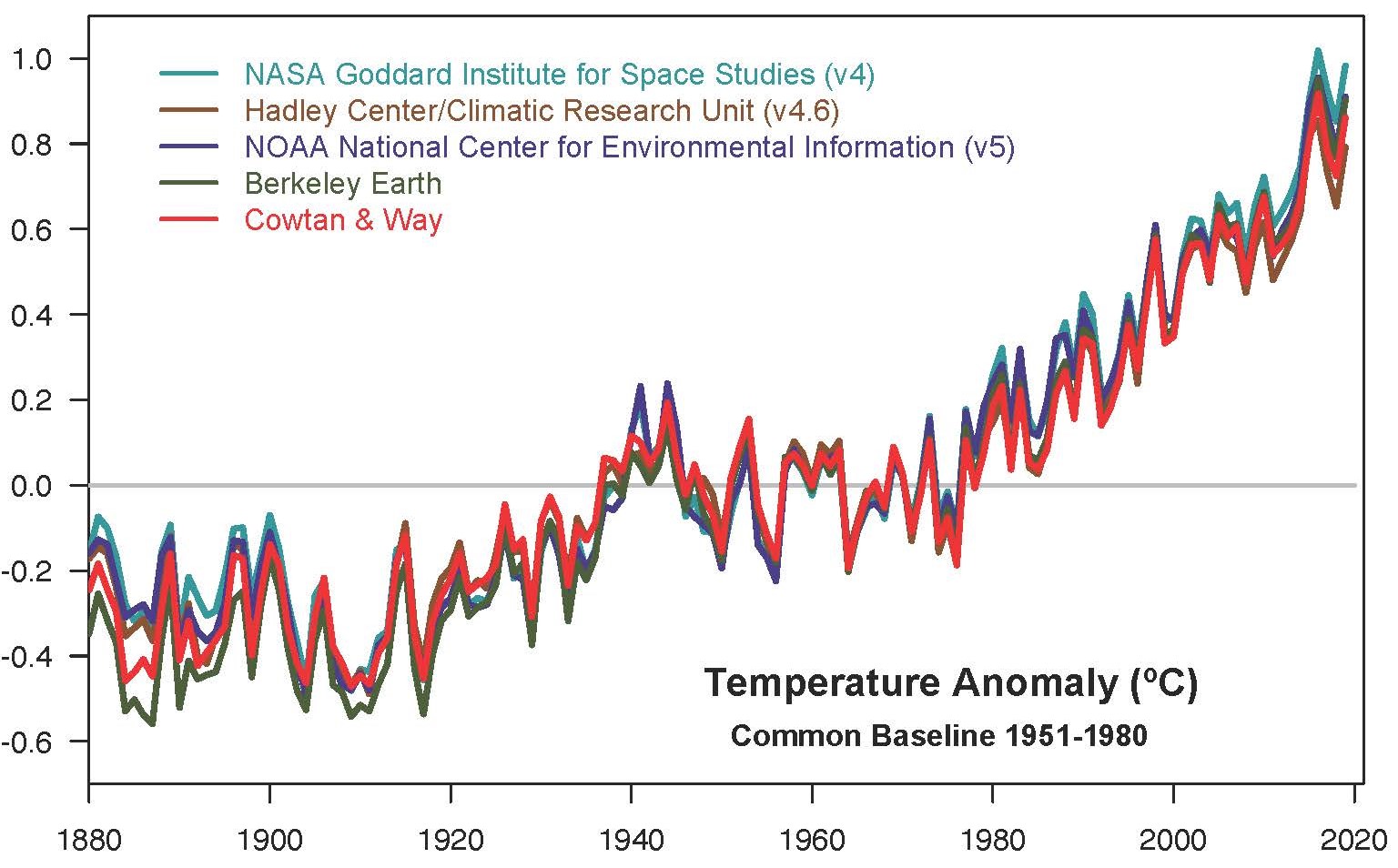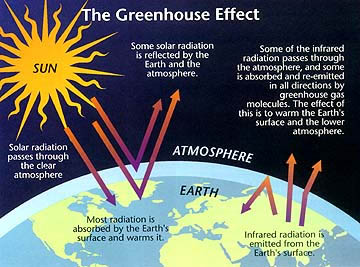Greenhouse Gases
To understand how climate change works, we must first study the greenhouse effect, caused by greenhouse gases. Think about a greenhouse...those glass-walled structures used to grow plants. Radiated heat from the sun is moving so fast that it passes right though the walls. After it rebounds, the infrared waves do not have enough energy to pass back through, and thus get trapped. This causes the structure to get warmer, resulting in accelerated growth of plants. A diagram of this is below.
We tend to focus on carbon dioxide, because we make A LOT of it, but there are other greenhouse gases as well. The relative abundances of greenhouse gases are shown in the infographic below.
We need to work on reducing all of the greenhouse gases, but as you can plainly see, carbon dioxide will be the easiest for us to reduce because we make so much of it via combustion of fossil fuels for electricity(coal), transportation (oil), and industry (both). Methane is a big problem as well, because it actually has a stronger greenhouse impact over carbon dioxide. It's a big player from cattle/agriculture.
Predictions for Climate Change
The evidence is fairly overwhelming that the Earth as a whole is warming, and it's unnaturally accelerating due to human contributions. It makes sense. Does that mean we'll not have any cold times? NO! It will just change the average temperature overall in an increasing way. We will still have snow storms, maybe even more intense because of the climactic changes. But, what are the predictions for the future and how do we make those predictions? What do leading scientists think will happen? Watch this video from the SciShow for some insight.
So, to summarize the impacts, a warming climate may result in:
- Melting
of polar ice caps
- Flooding
of coastal areas
- Massive
migrations of people inland
- Alteration
of rainfall patterns
- Deserts
becoming farmland and farmland becoming deserts
- Significant
losses in crop yields
- Stronger and more frequent storms (due to more water evaporation during formation)
How soon or if these events will come to pass is up for debate, but we are seeing some impacts now. It is imperative that we address climate change, as even the threat of these events warrants action.





No comments:
Post a Comment